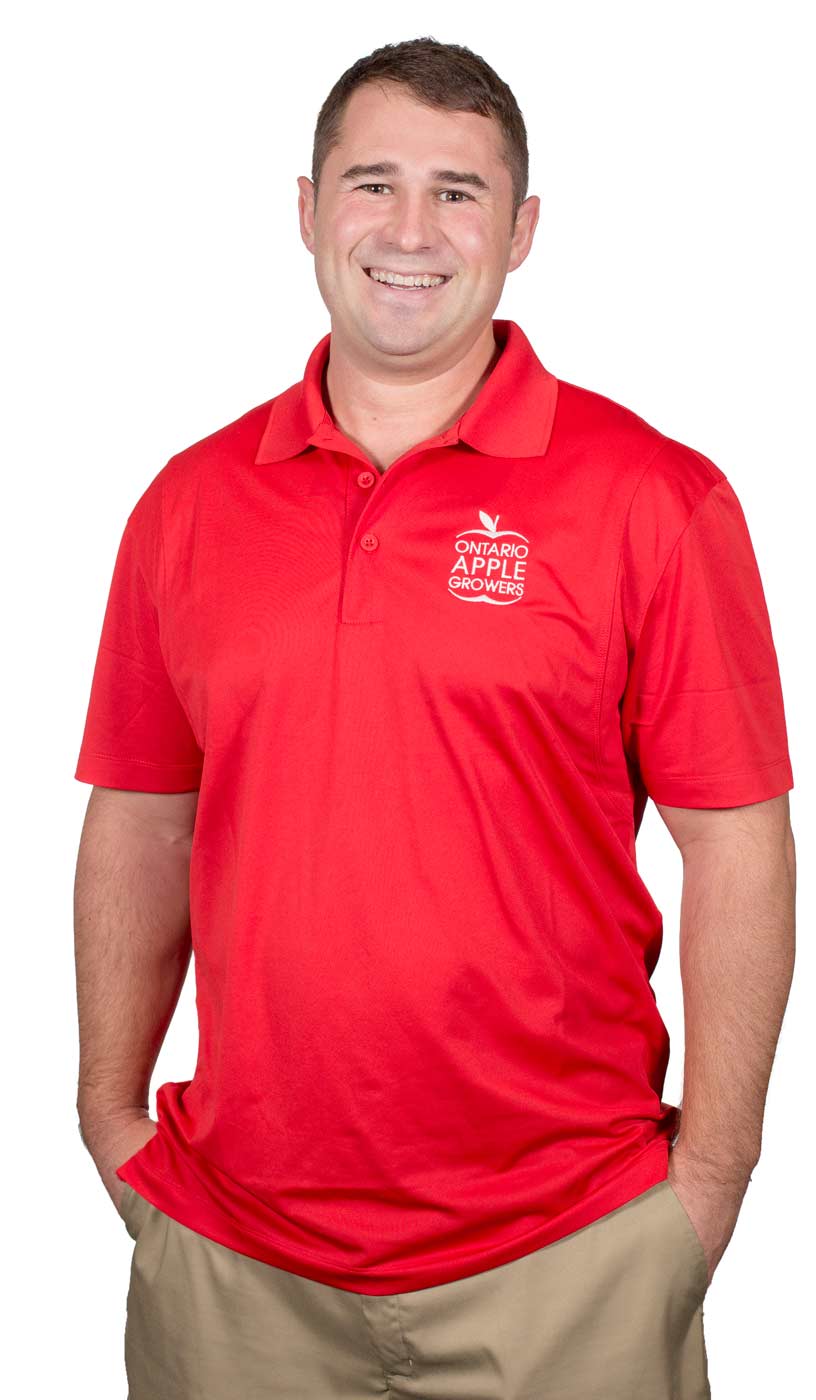family background/ After growing up on the family farm, Kyle earned a business degree working as a CPA before returning to work with his father, Shane, and mother, Gail.
age / 33
crops / Apples
business / Apple Springs Orchards, Inc.
 How did you get your start?
How did you get your start?
I can clearly remember getting off the bus in September/October and instead of going into my homework, my dad would save the bottom rows of our older trees, what we’d call the grounders, for me to pick.
When I was 10-12 years old that was my job during the fall after school. He could have had laborers do it, but no, that was my task. He was trying to build a work ethic in me I guess — and it worked.
What brought you back to the farm?
I’ve always enjoyed farming, but my dad encouraged me to go out on my own when I was young, to do my own thing. So, I went out and got my CPA (Chartered Professional Accountant) and after working in that field for five years, and with dad getting ready to slow down, I told him that I wanted to return.
I wasn’t cut out for sitting at a desk, doing computer work all the time. I wanted to be outside and I missed working with my hands. I can look back now and say that I know what it’s like working at a desk. Farming is definitely the fun stuff to do.
It’s true there’s a lot more paperwork in farming than when my dad started, from the GAP audits, etc. So far the CPA experience has really helped me sort those out. Ultimately though, I want to get outside and do the fun stuff, away from the desk.
What apples has your farm had success with?
We have several different varieties on our farm. Honeycrisp is the big one. We have cool nights in the Georgian Bay region that really helps with coloring — and that’s on the old strains of Honeycrisp, too.
We have quite a bit of Ambrosia, which are leaning into our harvest window for our (Northern) Spys. Because of that, we may replace them with Ambrosia. It’s good because it’ll allow us to move one of our older varieties out for a fresh market product.
One of my goals is finding new varieties that match up well for what we are removing.
What are some of your grower challenges?
Some of the challenges are weather related. One of our neighbor growers put in some new trees and then we were hit with a polar vortex storm that dropped the temperature around -40 degrees.
The older established trees were fine, but all of the new plantings were completely wiped out. It was devastating. Recently we’ve been having so many weather fluctuations, too. Every year comes with some new record low or high — and I believe it’ll affect the area again.
With large temperature swings the trees will survive, however, if you have a really cold winter followed by a drought or overcropping, you can stress the trees out making them vulnerable to fire blight or other diseases. Then all of a sudden you have a couple years dealing with poor returns on your crops.
Besides weather, what other challenges do Ontario growers face?
About 26 percent of Ontario’s apples come from my area in the Georgian Bay, and now growers are increasingly having to deal with politics. It plays a large role for us. We had our minimum wage indexed, allowing the politicians to unexpectedly increase the wage this year and next.
All together we are facing a 32 percent increase. Several growers brought that to the government’s attention, asking how they’d handle it if their ministerial budget was increased that much?
I don’t think folks in ag will have enough votes to moderate this change or make them care. This is just one of the scary risks of farming with how our government works. That’s why I’m looking at technologies and recent innovations to deal with uncertain politics. I hate to think I might have to cut jobs, because some of our crews have been with us for 30 years. I don’t want to lose employees because of politics.
What is your plan for the next couple years?
I think that we’ll be retooling the farm. From pulling out older trees on M.26 to making decisions on whether we’ll put in a 2D planar system or a V-trellis with the new varieties that consumers are going to want over the next 20 years.
We’re going to have to plan ahead. Figuring those things out will be the biggest issues.
What advice do you have for younger growers?
The biggest thing younger growers need to do, like any other industry, is to be constantly learning.
Up in Ontario, we don’t necessarily have extensions to support us, but you need to find areas of cooperation with universities, associations and other groups so you as a grower can continue to learn.
You’ve got to look at new technologies, new ways to do something, and don’t dig your heels in not wanting to try. Run the numbers when looking at changes and see if it works for you, because every farm is a little different.
– by TJ Mullinax






Leave A Comment